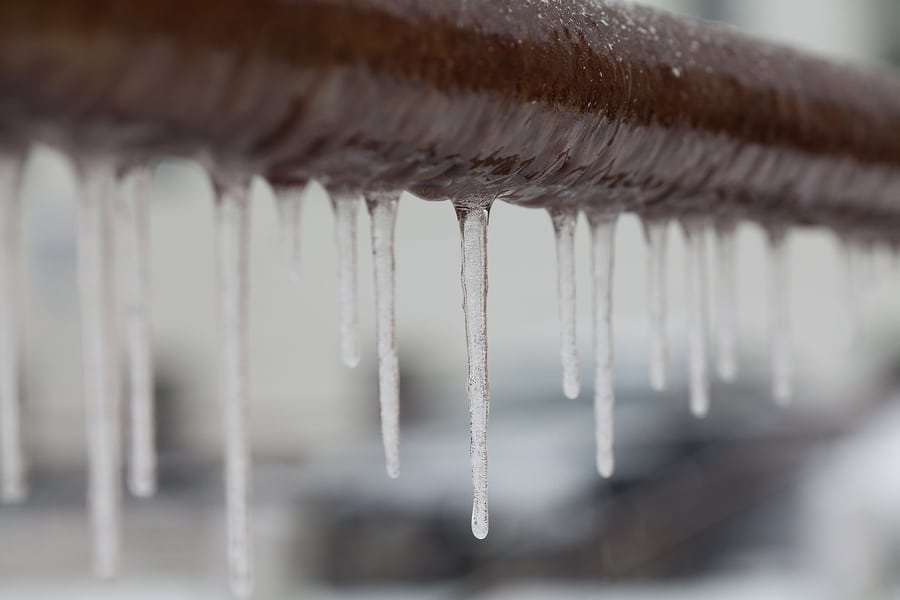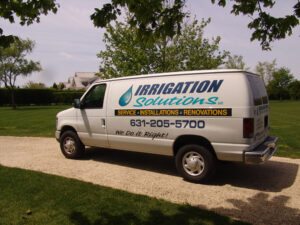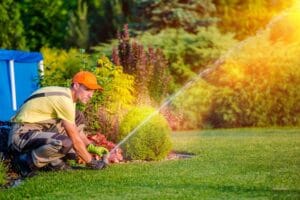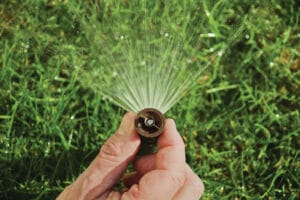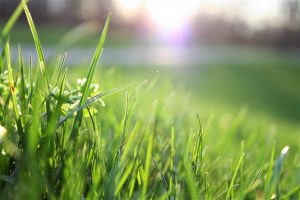Sprinkler winterization extends the lifespan of your system and saves you money. The Irrigation Solutions team’s simple process ensures that your system will be ready to spring into action when the weather warms up.
Preparing your sprinkler system is an essential part of home maintenance if you experience freezing temperatures in winter. Any water left in the system will freeze in the tubing, making it brittle and prone to cracking. Call us today for sprinkler winterization!
Our Sprinkler System Winterization Process
When we winterize your sprinkler system, we follow the steps outlined below.
Shut Off the Water Before Lawn Sprinkler Winterization
Step one is turning off the water supply near your home’s water meter. If you have a backflow device in place, we also close its shut-off valves.
Turn Off the Timer
If your timer has a “Rain Mode,” we’ll set it accordingly. This setting powers the system but retains your programming without much electricity. When spring comes around, we change the mode again, and your unit kicks on without issues.
For more modern models, we simply switch it off.
Drain the Water Before Irrigation System Winterization
Now we can start with your sprinkler winterization and drain the water out of the system. It’s a painstaking process and will take a while, but it’s the best way to protect your tubing. If you neglect this step, the water will freeze in the pipes, and they could burst.
We’ll select the correct method for your make and model and perform the task, making the process effortless for you.
Manual Draining
If your system allows for manual draining, it will have shut-off valves on either end of or in the dips of the tubing. As the pressure in the pipes is high, we carefully open the valves and bleed the water from them.
Automatic Draining
Some models begin automatic draining when you switch off the main shut-off valve. We speed up the process by running the system until the water runs out. We then loosen the solenoid of each valve to allow air into the tubing.
The air pressure forces any remaining water out.
Blow-Out Draining
You can hook an air compressor up to the system and force the water out, but we recommend leaving this task to us. You’ll need an industrial-strength compressor to do the job correctly, and someone without experience working with delicate piping can damage the system.
Insulate Above-Ground Components
Our final step is to insulate any exposed parts of the sprinklers. We carefully wrap the backflow preventers, above-ground pipes, and the shut-off valve with foam and then tape the foam down with insulation tape.
Our team’s comprehensive maintenance will ensure that they insulate every part that might be in danger.
Why Opt for Professional Assistance?
Opting for professional assistance can save you cash. While it seems counterintuitive to pay someone for a simple task, hear us out. Sprinkler winterization is a simple process on paper.
However, much can go wrong. You might not be able to drain out all the water, accidentally break piping or valves, or inject too much air and destroy the system.
The components are complex, and you might not recognize signs of wear and tear or damage. A professional will know what to look for when identifying potential trouble spots.
Considering how much it costs to replace a sprinkler system, it seems ineffective to try a DIY option when we have such affordable rates.
Contact Irrigation Solutions at (601) 205-5700 or reach out through our contact form today to receive your free estimate. You’ll be surprised to learn how much you can save on sprinkler winterization this year.

